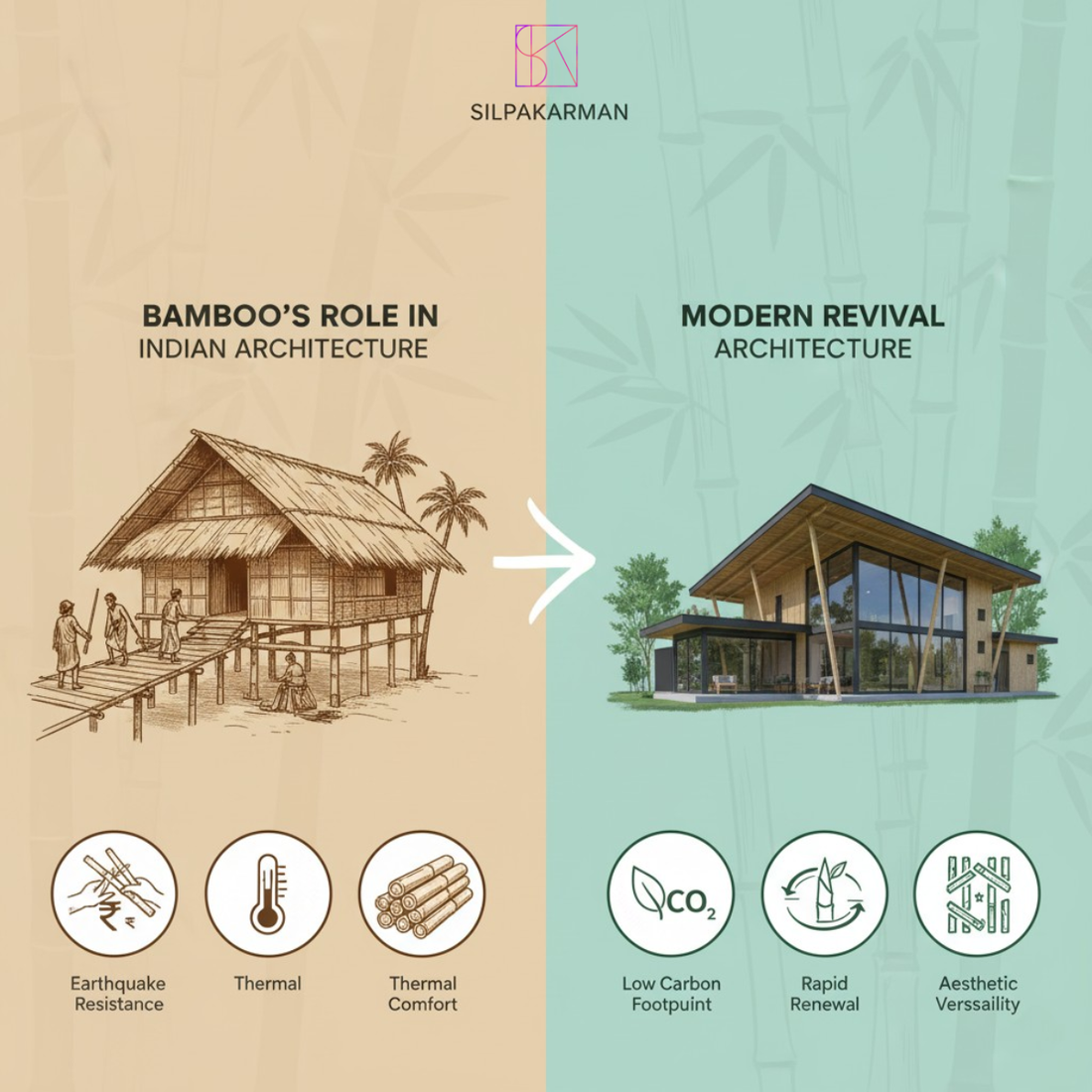
From Tribal Homes to Modern Marvels: The Revival of Bamboo in Indian Architecture
Compartir
Long before steel and concrete dominated skylines, the people of India had already mastered a material that was strong, flexible, and perfectly sustainable: bamboo.
For centuries, especially in the northeastern states, the Western Ghats, and various tribal regions, bamboo has been the backbone of human settlement. It was used not just for walls and floors, but for entire houses, bridges, and intricate scaffolding.
A Heritage Built on Grass :
Traditional Indian architecture valued materials that were locally sourced and easily renewable. Bamboo fit this perfectly:
- Earthquake Resistance: The flexibility and lightweight nature of bamboo structures make them highly resilient to seismic activity, a vital trait in many parts of India.
- Thermal Comfort: Bamboo walls naturally regulate temperature, staying cool in the summer and warm in the winter, making them incredibly energy efficient long before we used the term "insulation."
- Affordability and Accessibility: Growing rapidly and abundantly, bamboo provided communities with a material that was cheap, easy to process with simple tools, and readily available for repairs or expansion.
This is the heritage we honour at Silpakarman—a deep respect for bamboo as an essential, high-performance material, not just a trendy one.
The Modern Revival: Sustainability Drives the Comeback :
Today, the world is scrambling for alternatives to carbon-intensive materials like concrete and steel. This global shift has led architects and designers back to bamboo, recognizing its unmatched benefits:
- Low Carbon Footprint: As a building material, bamboo absorbs vast amounts of CO2 during its rapid growth, helping to lock carbon away for the life of the structure.
- Rapid Renewal: Its quick maturity (3-5 years) means an entire structure can be built from a crop that regenerates itself faster than almost any other natural material.
- Aesthetic Versatility: Modern treatments allow bamboo to be shaped, joined, and finished in sophisticated ways, proving it belongs in contemporary eco-luxury homes, resorts, and corporate buildings.
Bamboo isn't just an ancient idea; it's a modern necessity. By bringing the principles of traditional construction into our design ethos, Silpakarman aims to champion the versatility and sustainability of bamboo, from your home décor to the very buildings around you.
